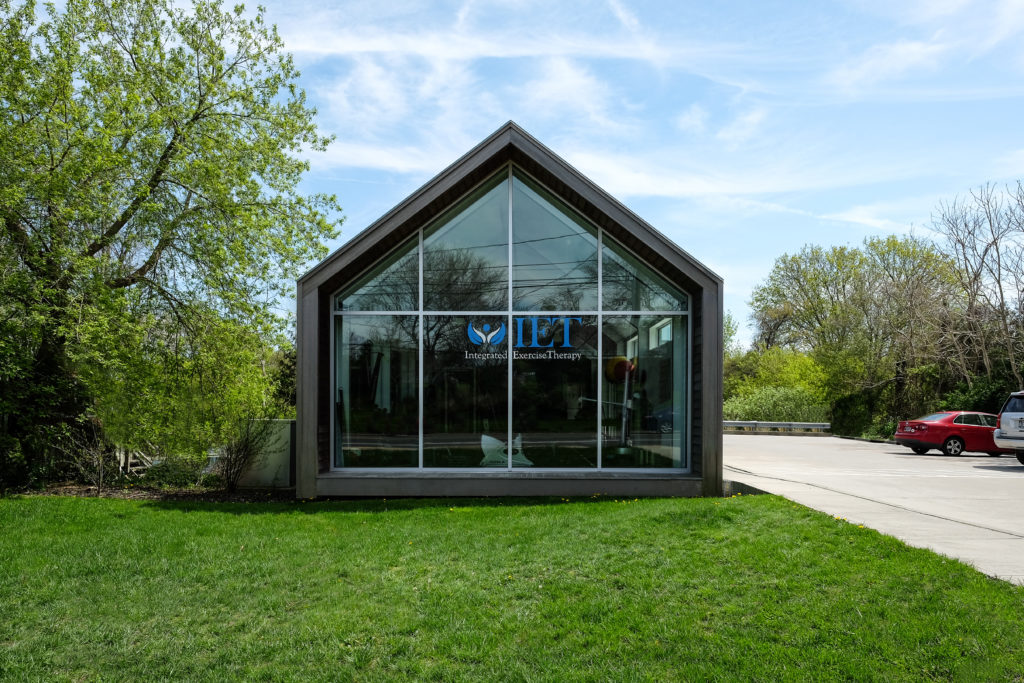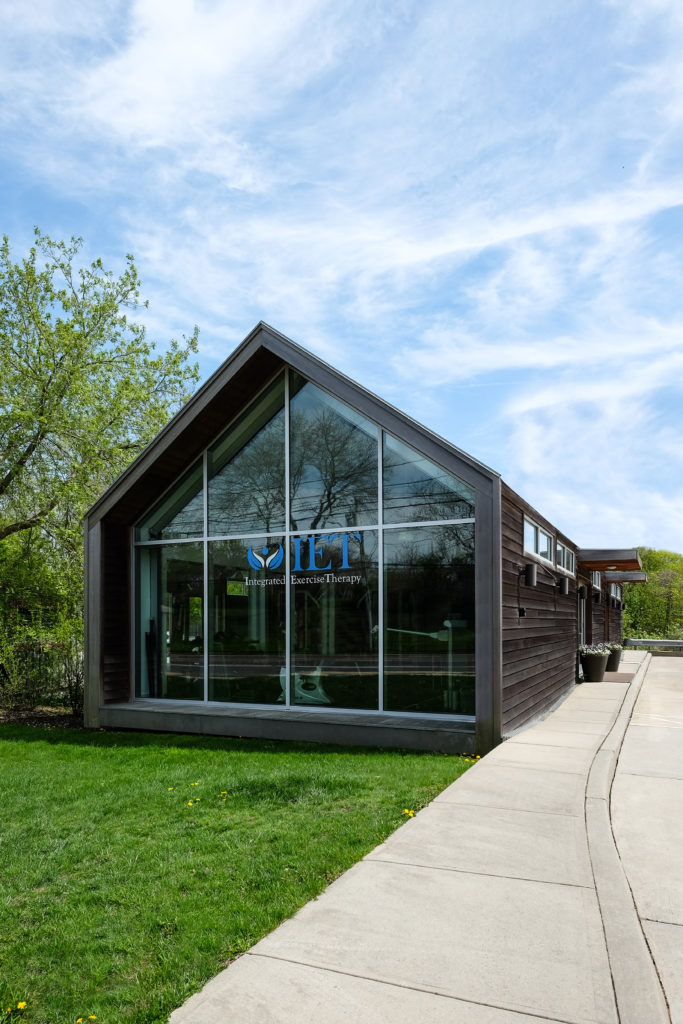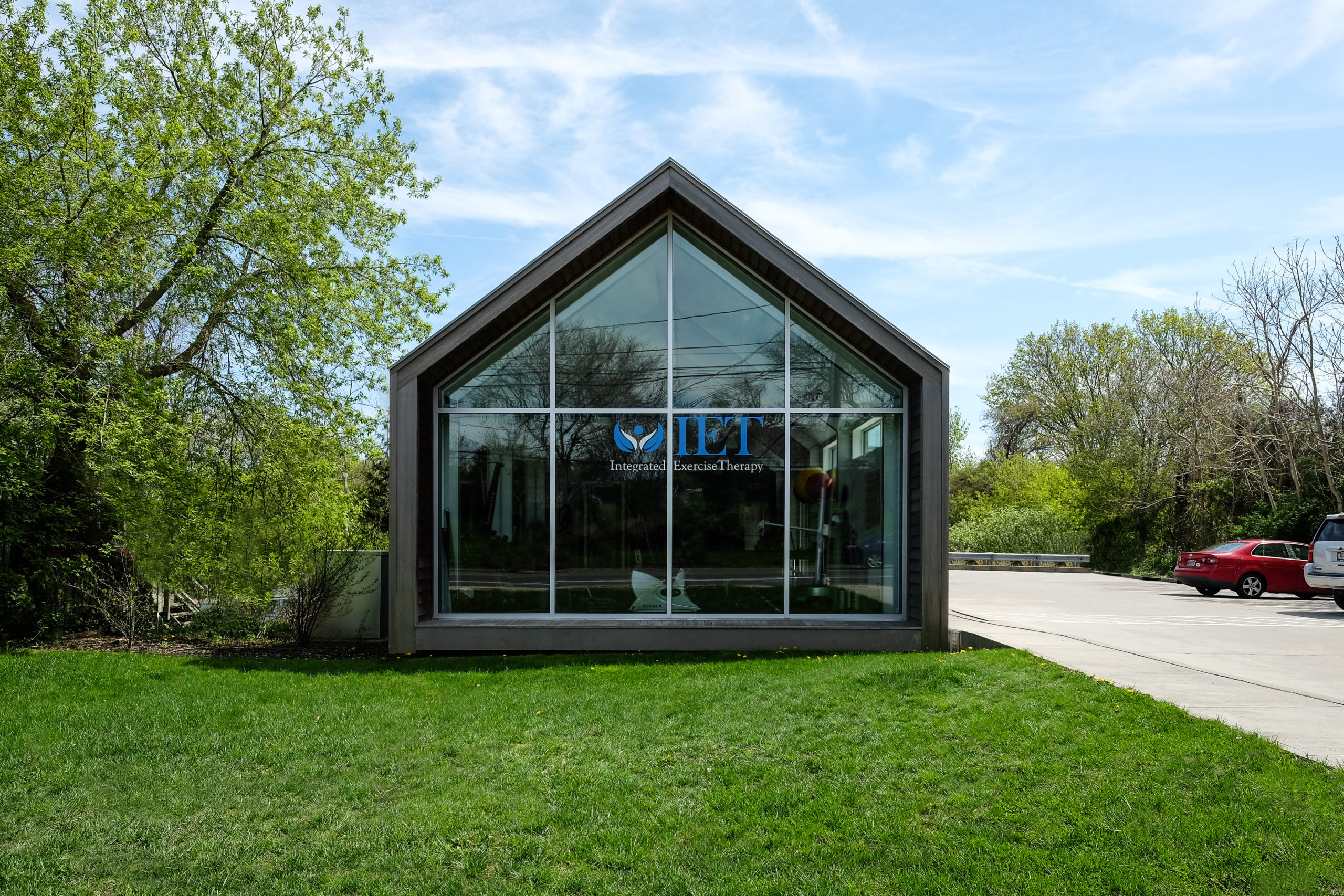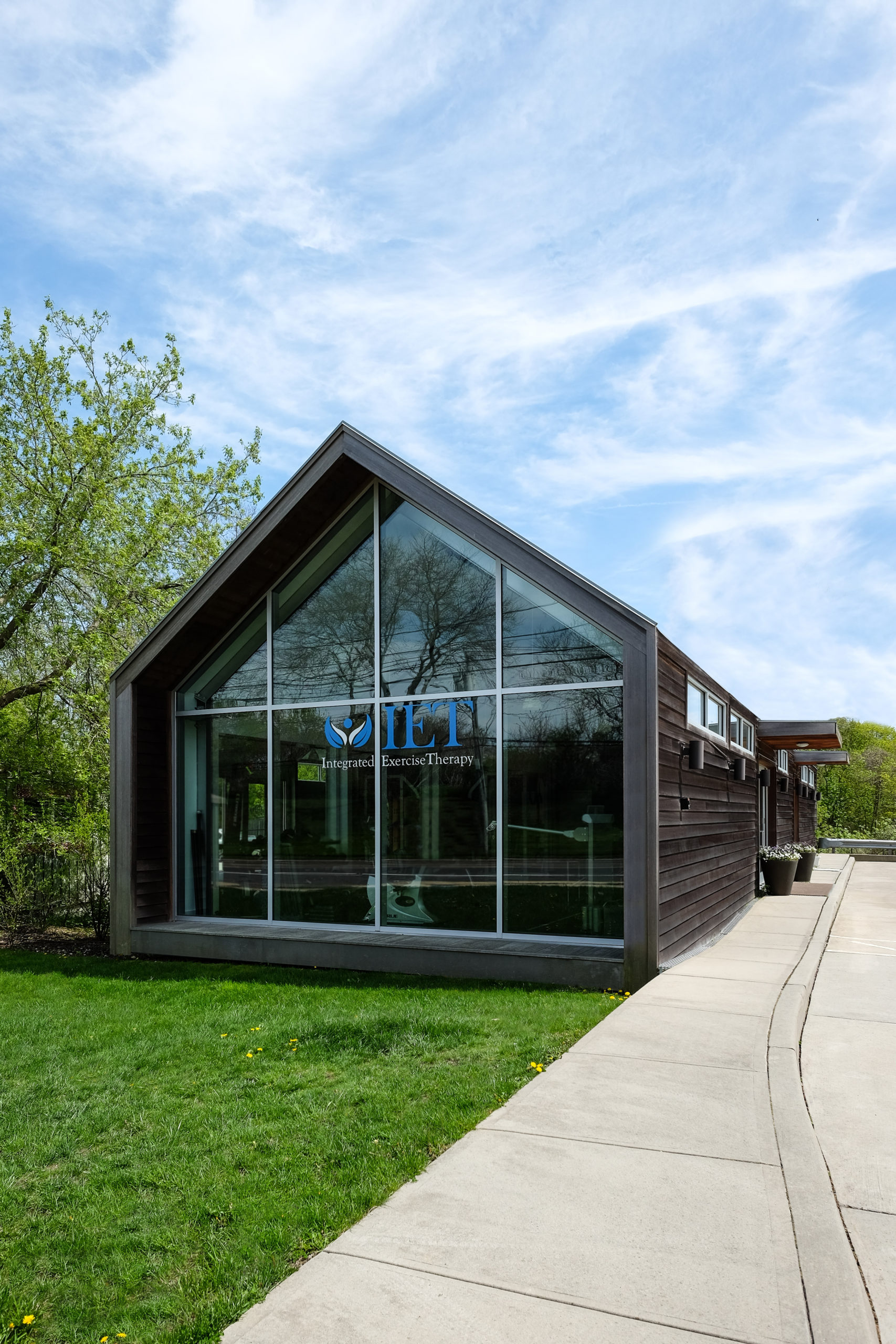Sylvan Haus
Bridgehampton, NY
The site for this mixed use project is a long, narrow lot (less than 90 feet street frontage) with a relatively flat topography that drops off substantially at the rear of the property. Located at the edge of the commercial district in Bridgehampton with restricted visibility, three planning goals evolved: maximize street presence of the 1,400 sq. ft. retail component, minimize the visual presence of parking and take advantage of the change in topography.
The solution created three narrow ‘layers’ running the length of the site, starting with the required dimension of parking spaces, followed by vehicular circulation and lastly, the resultant 22 foot width of the building. While both the retail and the affordable housing apartment unit are entered at grade, the ‘upside down’ duplex apartment minimizes site disturbance by locating the bedroom floor one level below at existing grade.
The owner and architect are committed to pursuing a LEED Platinum rating for this project and have commissioned an energy modeling process in pursuit of this effort. The site was originally selected for its immediate access to public transportation with a bus stop less than 100 yards away. It includes bicycle storage, shower facilities and preferred parking for fuel efficient vehicles. Storm water management, including the use of bioswale system and water collection will produce a 100% permeable site.
The building envelope will be a prefabricated structural system consisting of a recycled steel skeleton and insulated sandwich panels. It has been modeled to achieve a 46% reduction in energy usage. Lower and upper operable windows have been strategically located to maximize the efficiency of natural ventilation. A metal, standing seam, ‘cool’ roof and reclaimed cypress rainscreen complete the exterior.
The use of low flow fixtures and the reuse of collected storm water will result in a 42% reduction of water usage. Green Power certificates will be purchased in lieu of on site renewable energy that would be restricted by town agencies. Over 50% of wood used for siding, flooring and finishes will be FSC certified. All paints, sealants and adhesives will comply with VOC and off gassing limits set by LEED.
The solution created three narrow ‘layers’ running the length of the site, starting with the required dimension of parking spaces, followed by vehicular circulation and lastly, the resultant 22 foot width of the building. While both the retail and the affordable housing apartment unit are entered at grade, the ‘upside down’ duplex apartment minimizes site disturbance by locating the bedroom floor one level below at existing grade.
The owner and architect are committed to pursuing a LEED Platinum rating for this project and have commissioned an energy modeling process in pursuit of this effort. The site was originally selected for its immediate access to public transportation with a bus stop less than 100 yards away. It includes bicycle storage, shower facilities and preferred parking for fuel efficient vehicles. Storm water management, including the use of bioswale system and water collection will produce a 100% permeable site.
The building envelope will be a prefabricated structural system consisting of a recycled steel skeleton and insulated sandwich panels. It has been modeled to achieve a 46% reduction in energy usage. Lower and upper operable windows have been strategically located to maximize the efficiency of natural ventilation. A metal, standing seam, ‘cool’ roof and reclaimed cypress rainscreen complete the exterior.
The use of low flow fixtures and the reuse of collected storm water will result in a 42% reduction of water usage. Green Power certificates will be purchased in lieu of on site renewable energy that would be restricted by town agencies. Over 50% of wood used for siding, flooring and finishes will be FSC certified. All paints, sealants and adhesives will comply with VOC and off gassing limits set by LEED.




